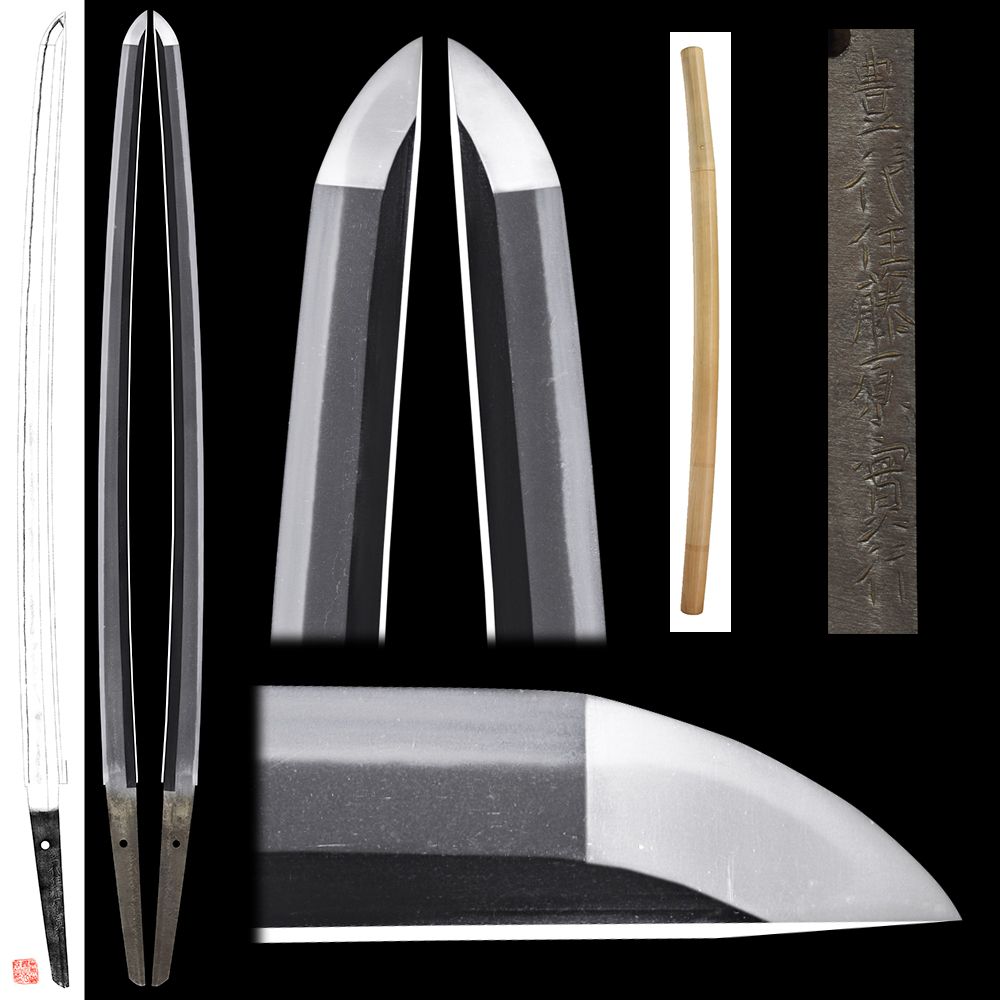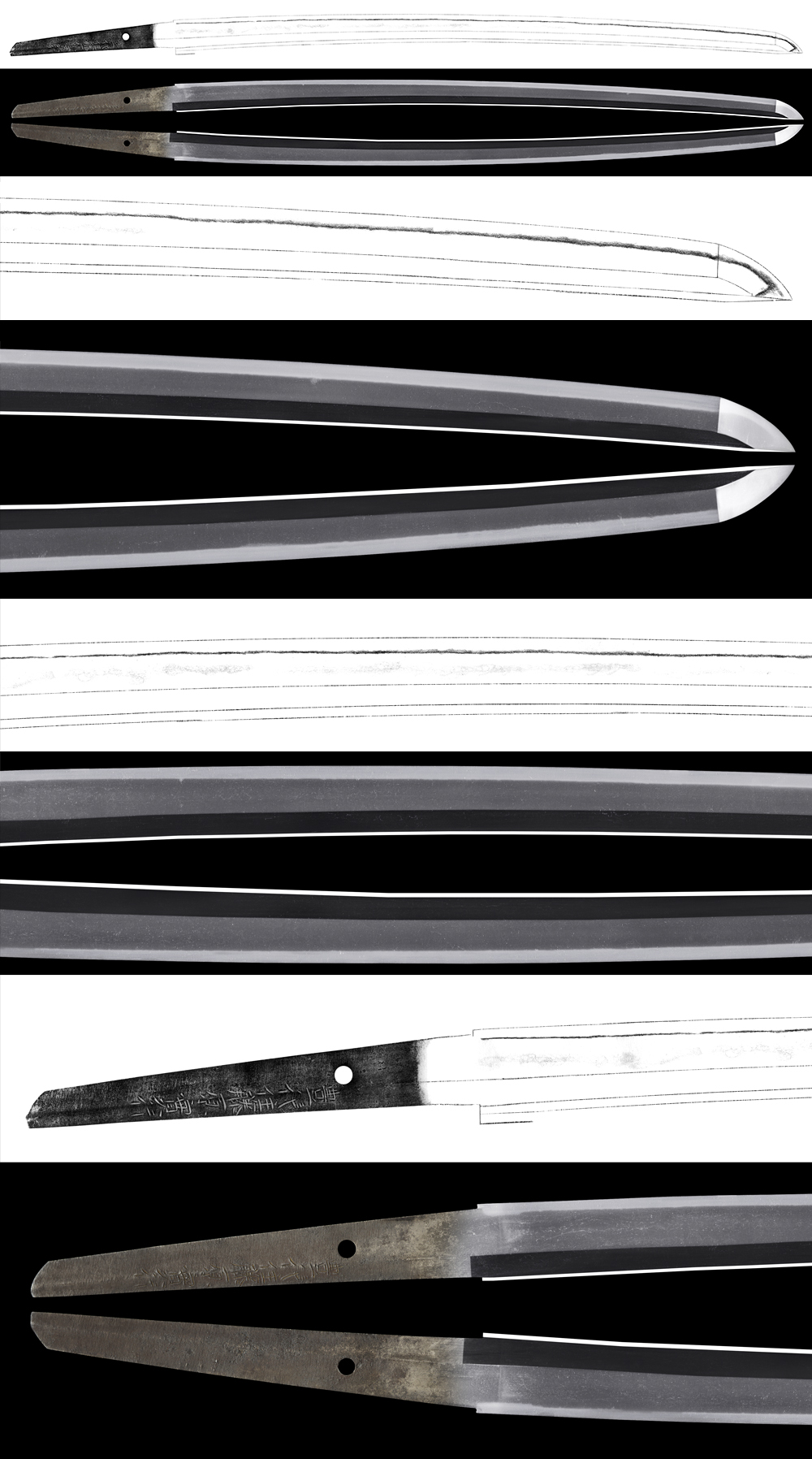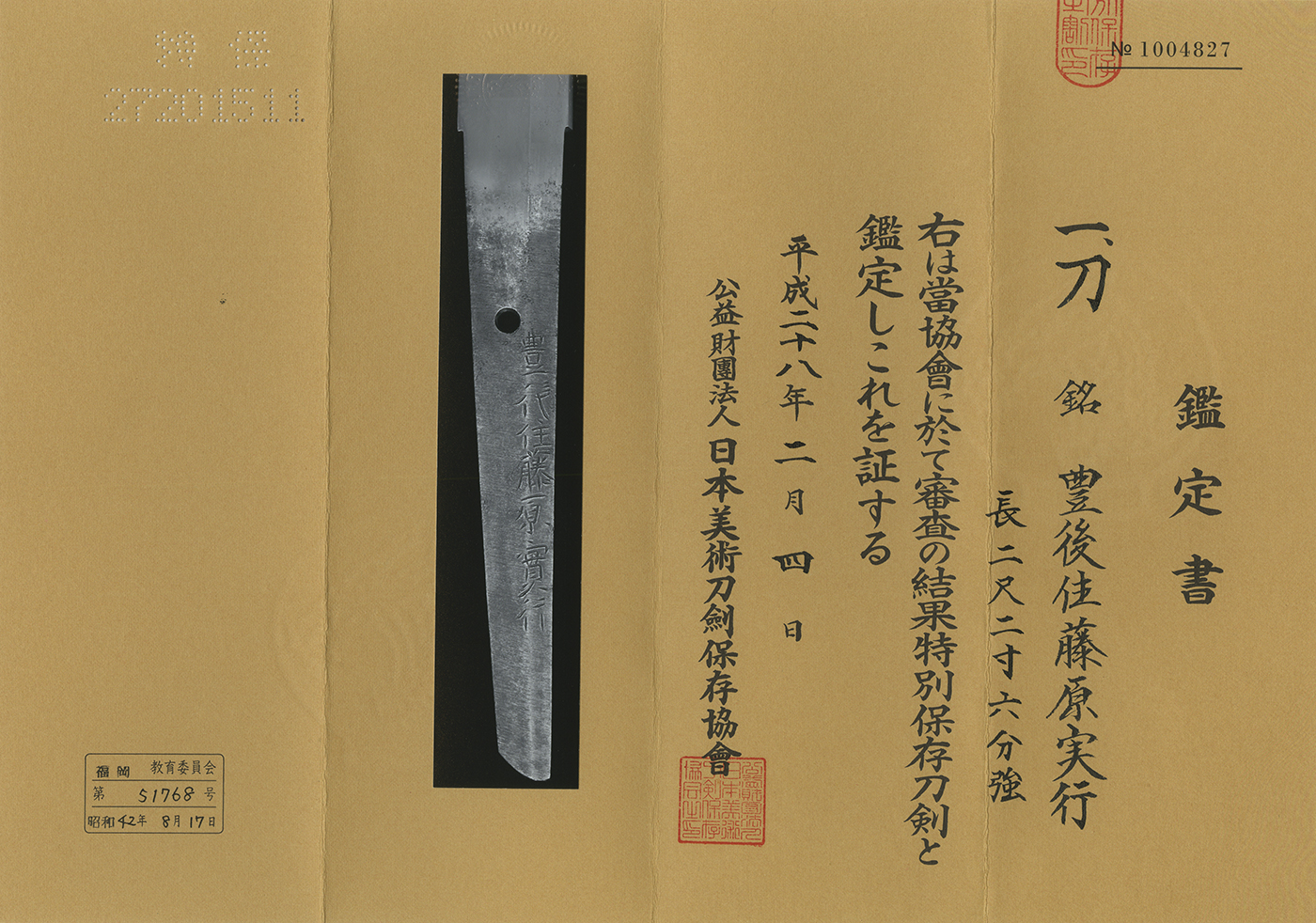Katana: Bungo-ju Fujiwara Saneyuki
2017/01/05
Katana in Shirasaya with Koshirae. (consignment sale)
Signature : Bungo-ju Fujiwara Saneyuki (NBTHK Tokubetsu Hozon paper)
(We divide 4 sections for each sword as Saijyo saku, Jyojyo saku Jyo saku and regular saku)
This sword belongs to Jyo ranking.
The blade is polished.
Habaki : Silver double Habaki.
Blade length : 68.5 cm or 27.0 inches.
Sori : 1.2 cm or 0.47 inches.
Mekugi : 1
Width at the Hamachi : 3.14 cm or 1.24 inches.
Width at the Kissaki : 2.19 cm or 0.86 inches.
Kasane : 0.78 cm or 0.31 inches.
Era : Edo period Kanei era. (1624~1645)
Shape : Wide and thick blade with balanced curve long Kissaki Kanei style sword.
Jigane : Koitame-hada well grained with Jinie attach beautiful Jigane.
Hamon : Nie-deki tight Suguha Boshi turns round shape.
Koshirae :
Saya : Wood pattern black Roiro Saya.
Tsuba : Leaf engraved on Otafuku shape Saotome style Tuba.
Menuki : Flower engraved on Shakudo plate with gold color.
Hystorical background : The Shimabara Rebellion was an uprising in southwestern Japan lasting from December 17, 1637, to April 15, 1638, during the Edo period. It largely involved peasants, most of them Catholic Christians in Japan.
Rebellion occur at Shomabara province which was governed by Katsuie Matsukura Shimahara Daimyo and Amakusa islands which was governed by Kanetaka Terasawa.
These Daimyo were very hard attitude of the money(rice) tax against pheasants and also Christian Daimyo who joined a rebel faction. The Tokugawa Syogun squashed a revolt.
Shimabara Daimyo took the responsibility and Depriving disposal and beheading.
At Edo period Daimyo must Harakiri by himself but beheading was just only one time.
Terasawa Daimyo was confiscation of assets and killed by himself.
Ruins of Hara castle.
NBTHK Tokubetsu Hozon paper
Aoi Art estimation paper : whole Oshigata.





